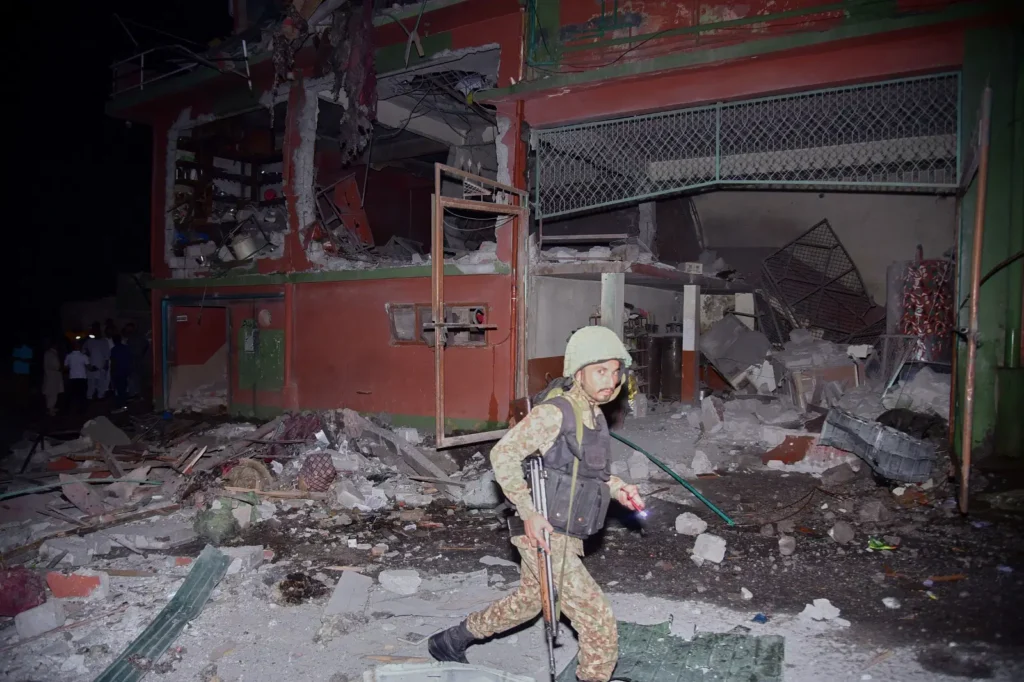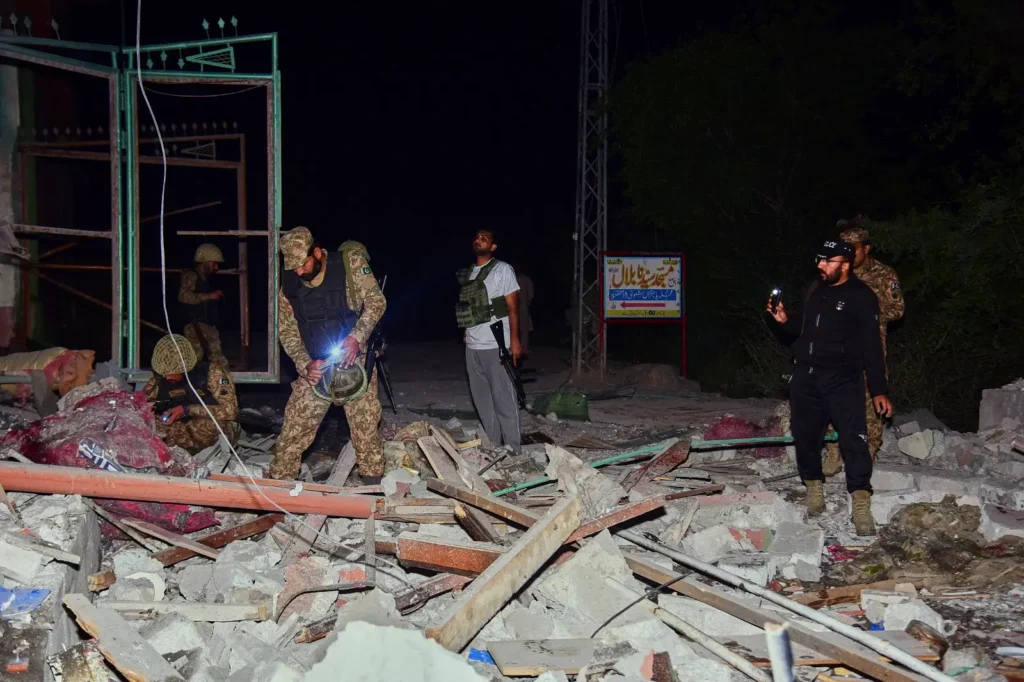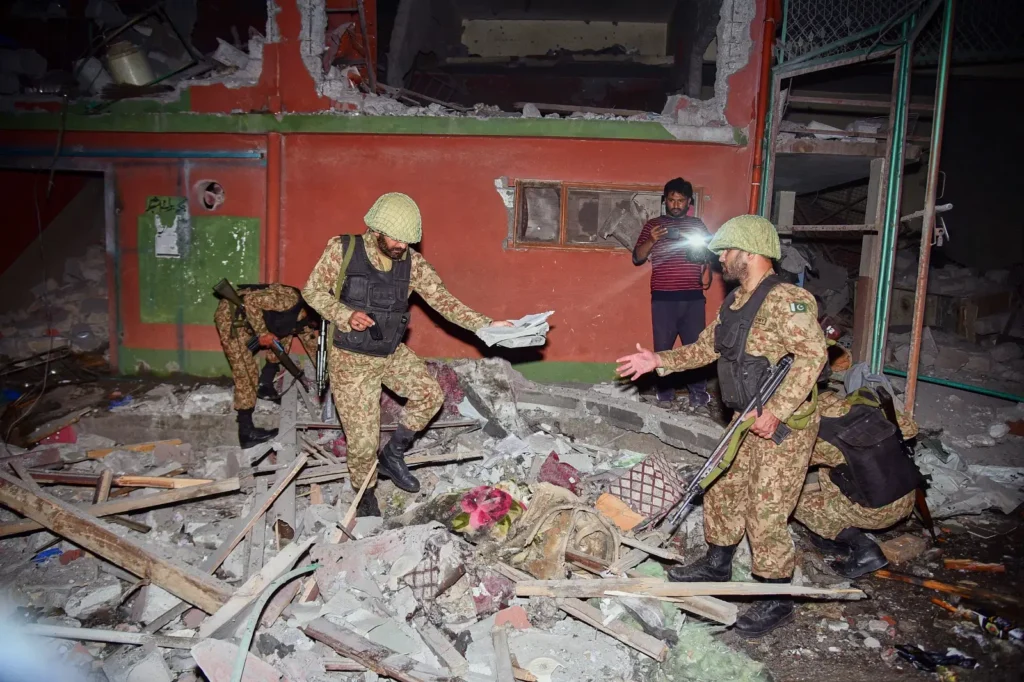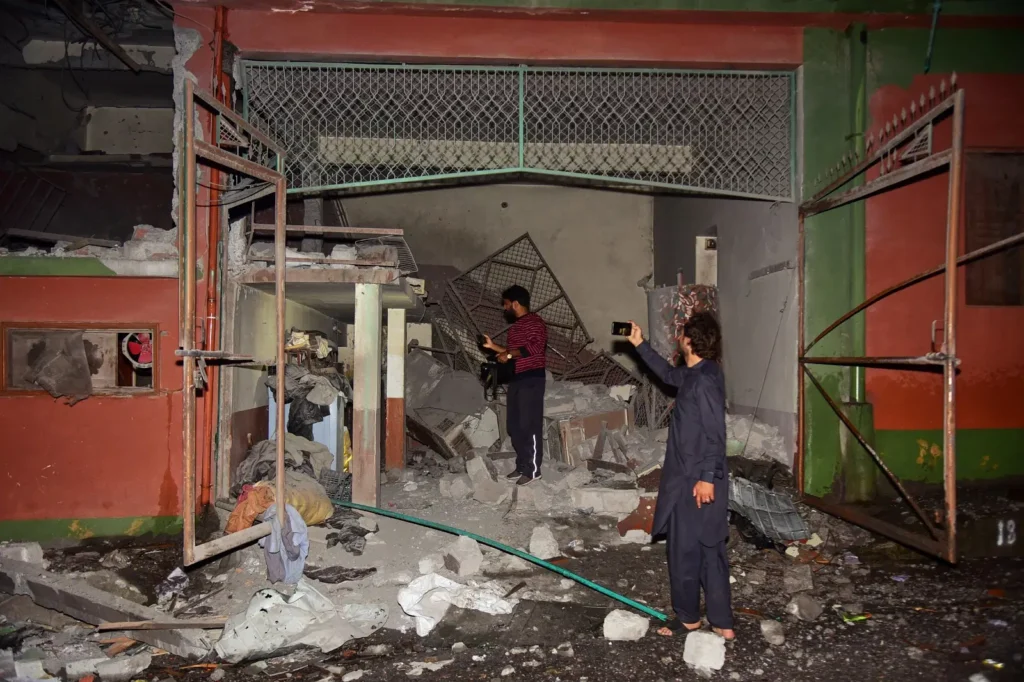Summary: Operation Sindoor – India’s Retaliatory Strikes After Pahalgam Attack
Fifteen days after Pakistan-backed terrorists in Pahalgam wiped the sindoor (vermilion) from the foreheads of Indian women, India has taken decisive revenge. In a focused and restrained response, Indian armed forces launched Operation Sindoor, targeting terrorist bases in Pakistan and Pakistan-occupied Kashmir (PoK). Using lethal drones and precision-guided missiles, India destroyed terror infrastructure at nine locations identified as launchpads for attacks against India.
The strikes, carried out around 1:44 am, specifically targeted camps belonging to groups like Jaish-e-Mohammed, Lashkar-e-Taiba, and Hizbul Mujahideen, based on intelligence inputs. The Indian Ministry of Defence emphasized that no Pakistani military or civilian installations were targeted, underlining that the action was non-escalatory and carefully planned. The operation was India’s direct response to the barbaric Pahalgam terror attack, in which 25 Indian and one Nepali citizen lost their lives. Indian forces reaffirmed their commitment to holding the perpetrators accountable and demonstrated restraint in both target selection and execution
Details
India has taken revenge on Pakistan for the terrorist attack in Pahalgam. The Indian Army has destroyed nine terrorist hideouts in Pakistan and Pakistan-occupied Kashmir (PoK). There is a scene of devastation at these locations in Pakistan, and images of this have also surfaced. The pictures show that the buildings sheltering terrorists have been demolished in the Indian Army’s attack. All three branches of the Indian armed forces jointly carried out this action. It is worth noting that in the terrorist attack in Pahalgam on April 22, terrorists had killed 26 innocent people. Now, under Operation Sindoor, India has demolished the terrorist hideouts present in Pakistan.
In the photos, it can be seen that a building in Muzaffarabad, Pakistan-occupied Kashmir, has been destroyed in an Indian missile strike. It is being said that several terrorists were present in this building. Pakistani soldiers can also be seen inspecting the damaged building near Muzaffarabad following the Indian missile strike.




Which locations in Pakistan were targeted?
India targeted terrorist hideouts in Bahawalpur, Muridke, Sialkot, Bhimber, Kotli, and Muzaffarabad. Sources revealed that Indian missiles hit Jaish-e-Mohammed’s base in Bahawalpur, the Central Grid System in Muzaffarabad, and Hafiz Saeed’s base in Muridke. Jaish-e-Mohammed’s leader is Masood Azhar, the same individual who had to be released in 1999 after the IC-814 Kandahar plane hijacking. After Masood Azhar’s return to Pakistan, Bahawalpur became a major training hub for terrorists. Jaish-e-Mohammed has been involved in the 2001 Parliament attack, the 2016 Pathankot attack, and the 2019 Pulwama attack. On the other hand, Hafiz Saeed is the leader of Lashkar-e-Taiba, the mastermind of the 26/11 Mumbai attacks. Lashkar-e-Taiba’s headquarters is located in Muridke. This terrorist organization has been operating from Muridke since 1990. India chose these locations specifically to target the leaders of Lashkar-e-Taiba and Jaish-e-Mohammed. Meanwhile, Muzaffarabad and Kotli are close to the Line of Control.
List of Destroyed Locations:
- Markaz Subhan Allah, Bahawalpur
- Markaz Taiba, Muridke
- Sarjal, Tehra Kalan (Bahawalpur)
- Mahmuna Zoya Facility, Sialkot
- Markaz Ahle Hadith Barnala, Bhimber
- Markaz Abbas, Kotli
- Maskar Raheel Shahid, Kotli
- Shawai Nala Camp, Muzaffarabad
- Markaz Syedna Bilal, Muzaffarabad
Why was this action necessary?
On April 22, 2025, a terrorist attack occurred on tourists in Pahalgam, Kashmir. In this attack, 25 tourists and one Nepali citizen lost their lives. Following this, Prime Minister Narendra Modi had clearly stated that India would respond. Subsequently, in a meeting held on April 29 with the three service chiefs, the CDS, and the National Security Advisor, among other senior ministers, the Prime Minister said that the army had been given a free hand to decide how and when India would respond. After this, it was decided that India would take action soon.
Where did India take action?
In the Pahalgam attack, terrorists asked the tourists about their religion before shooting them. Fifteen days after the attack, on the intervening night of May 6 and 7, this action took place inside both Pakistan and Pakistan-occupied Kashmir, in locations where terrorist hideouts existed. A total of nine hideouts were targeted. It was ensured that no Pakistani military installation was affected. India exercised restraint in this matter and only targeted terrorist structures.
Why the name Operation Sindoor?
On April 22, 2025, terrorists opened fire at a tourist spot in Pahalgam, Kashmir. These terrorists asked people about their religion. Hindu men were separated and shot in front of their families. Several women lost their husbands in the attack. Some of these women had been married just a few days prior and had come to Pahalgam for tourism with their husbands. To honor the women whose ‘sindoor’ (vermilion, a symbol of marriage for Hindu women) was wiped away in this attack and to send a message, India named this operation Operation Sindoor.
See also – https://scoopusa24.com/2025-pahalgam-terror-attack-kashmir-tourists/
